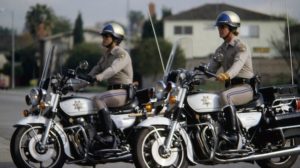 One of my favorite things about growing up in Seattle was Seafair, an annual three-week festival, featuring hydroplane races, ethnic celebrations, beauty pageants, a Navy flotilla on Elliott Bay, and a wild nighttime torchlight parade.*
One of my favorite things about growing up in Seattle was Seafair, an annual three-week festival, featuring hydroplane races, ethnic celebrations, beauty pageants, a Navy flotilla on Elliott Bay, and a wild nighttime torchlight parade.*
But for me, the best part of Seafair is the Blue Angels.
The Blue Angels is a demonstration squadron of fighter jets that performs aerobatic shows. They fly over Seattle for several days during Seafair, culminating in a magnificent performance over Lake Washington on the festival’s last day. The pilots execute graceful, death-defying stunts that amaze and astonish. Like thousands of other Seattle kids, I grew up fantasizing about flying a Navy jet on an aircraft carrier. For too many people in this world, the thunder of military jets connotes terror; I’m fortunate to associate that sound with exhilaration.
Thing is, the Blue Angels serve no tactical military purpose; the squadron’s $40 million annual budget and 7-pilot, 17-officer, 100-sailor team is an investment in brand-building. Brands are important sources of profit, and so naturally businesses invest heavily in their brands. But the US Navy isn’t supposed to generate profits, so what’s the point of the Blue Angels?
Why public agency brands matter
Public agencies have brand equity just like businesses do. Agency names, logos, songs, slogans, and other images carry positive or negative associations that make people more or less favorable toward the agency. For public managers, positive brand equity facilitates implementation in lots of ways.
 Brand equity can strengthen or weaken morale. Agencies with strong brand equity have an easier time attracting talented employees—which is important because governments often cannot compete for the best employees on salary and benefits alone.
Brand equity can strengthen or weaken morale. Agencies with strong brand equity have an easier time attracting talented employees—which is important because governments often cannot compete for the best employees on salary and benefits alone.
How many kids grew up wanting to be FBI agents after watching X-Files? Or wanting to be motorcycle cops because they liked Ponch and Jon on CHiPs?
Shrewd public managers know that brand equity is a political asset. A strong brand can buffer their organizations from politicians in times of crisis, and help build a coalition in support of expanded or enhanced authority. Leaders of agencies with strong brands can protect their “turf.” Citizens are more supportive of government programs when those programs are explicitly associated with favored agencies, too. My last post reported on a recent experiment that found that support for government management increased when associated with a specific agency’s name. Rhea Graham’s terrific response affirmed my sense that public managers think carefully about their agencies’ brands.
Implications for policy design
We typically think that assignment of implementation responsibility should follow capacity and competencies—that agencies with the necessary human capital and facilities should handle implementation. Brand equity introduces another dimension to the delegation decision. In some highly partisan contexts, it may make sense to assign implementation to multiple agencies in ways that align with their respective brand equity.
The findings in my recent study suggest that the US Army Corps of Engineers might make implementation of water policies easier in “Red” states than in “Blue” states. For the latter, the EPA probably might enjoy greater brand equity even if it lacks some of the USACE’s technical capacity. It’s an idea worth exploring.
*In the 1990s, organizers moved up the “torchlight” parade to daytime in response to worries about crime. Seafair Pirates and Clowns became much less… exuberant. The parade is now a pleasant but decidedly less bacchanalian affair.
